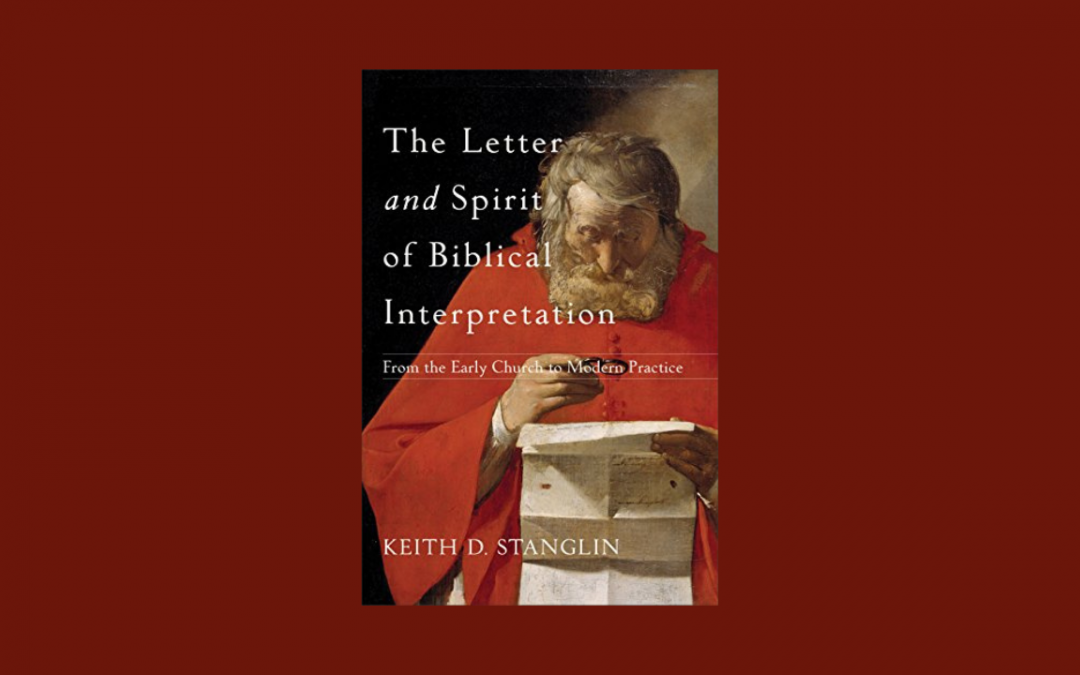
Covenant Theology III | The Covenant of Redemption
In this installment, I’ll be addressing Henebury’s third article in his series. Therein, he attempts to take on the covenant of redemption. Admittedly, this is a difficult article to interact with because he cites very little from his interlocutors, makes a lot of claims, and then fails to substantiate many of those claims with either circumstantial or exegetical evidence. This may be because Henebury only writes by way of summary and introduction—for those who are not yet familiar with this subject. However, if that were the case, his conclusion says too much:
What ought to be clear here is that the covenant of redemption depends upon assumptions about the salvation of the elect as the one people of God. These assumptions were already in place before the search was made to piece together verses to support it via inferences.
That the covenant of redemption depends upon assumptions is a conclusion that does not follow from the available premises throughout the article. He never actually defines what these assumptions are, much less does he show those assumptions to be false through rational demonstration. He just asserts their presence and opines their insufficiency. That’s not good enough. Henebury’s article tells us much about what the author thinks, but it doesn’t actually succeed in proving anything beyond his own opinion. We must go to the text of Scripture to learn of the covenants of Scripture.
The One People of God?
This issue will be raised again as we continue our interaction. However, Henebury mentions it here, so I will do the same. Quoting W. J. Grier, Henebury writes, “Let us here insist that there was a Church in Old Testament times; and that the Old Testament and New Testament believers form one Church – the same olive tree (Romans 11).” Henebury appears to take issue with this. And while it is true that I and my paedobaptist counterparts would have serious disagreements as to what the above quotation implies, it stands to reason that every Christian should be willing to confess a single people of God. Such is explicit biblical teaching. Ephesians 4:4 states, “There is one body and one Spirit, just as you were called in one hope of your calling…” And, speaking of the Old Testament saints, “And all these, having obtained a good testimony through faith, did not receive the promise, God having provided something better for us, that they should not be made perfect apart from us.” (Heb. 11:39-40)
Furthermore, the Septuagint (LXX) translates the Hebrew references to Israel as an assembly to ἐκκλησίαν on several occasions, e.g., Deut. 23:1, 3; 1 Kgs. 8:55, etc. This Greek term is often translated to “church” in the New Testament. Thus, linguistically, labeling the people of God under the old covenant a “church” should not be problematic beyond a semantic scruple.
Sometimes, this one people of God is referred to by theologians as “the church under the old covenant,” and the “the church under the new covenant,” respectively. Reasons for this vary. From my perspective as a 1689 federalist, this single people of God refers to the elect through all ages, i.e., under both old and new covenants united by a common faith in a common Messiah. For the paedobaptist federalist, they would view this one people of God externally under both old and new covenants. In other words, regeneration does not determine one’s covenant status so much as their external participation in the ordinances of the covenant do. For them, God’s covenant people are mixed (corpus permixtum), not only under the old covenant, but also under the new—since both are but distinct administrations of the same covenant. More on this later.
As a 1689 federalist, I grant that the church under the old covenant was a mixed body, composed of believer and unbeliever. A major hope of the Old Testament saints was the purification of Israel, a purification that takes place under the new covenant. And this is precisely the reason for the distinctively Baptist doctrine of regenerate church membership. One of the major changes inaugurated by the new covenant was the abolition of unbelieving covenant membership. Under the old covenant, one could be a covenant member by obedience to the external letter of the law. (cf. Gen. 17:14; Ex. 12:15, etc.) Under the new covenant, however, only the regenerate may lay legitimate claim to covenant membership, “No more shall every man teach his neighbor, and every man his brother, saying, ‘Know the LORD,’ for they all shall know Me, from the least of them to the greatest of them, says the LORD. For I will forgive their iniquity, and their sin I will remember no more.” (Jer. 31:34) More on this in a later post.
The Covenant of Redemption
The covenant of redemption (pactum salutis) is a controversial doctrine for a number of reasons, but two major points of departure currently come to mind. First, some think the covenant of redemption necessitates a form of process theology. Process theology alleges process, of one kind or other, in the Godhead, e.g., motion, transient passions, time-boundedness, give and take with creatures, etc. Though none of the earlier adherents to the covenant of redemption believed in process theology, they were inconsistent, so it seems, by alleging a covenant transaction in the Godhead prior to creation. A “transaction” in eternity seems like a contradiction to the very idea of that which is eternal. For creatures, transactions are always temporal and transitory. Second, even if some kind of agreement is granted amongst the Persons of the Godhead prior to the foundation of the world, should such an agreement be termed a “covenant”? Many would answer in the negative since a covenant, it is imagined, requires an act of solemnity, such as an oath.
Foregoing a thorough survey of the covenant of redemption as it appears in the literature apart from some very brief quotes by Guy Richard, Richard Belcher, and O. Palmer Robertson, Henebury writes, “We’re not exactly off to a good start.” Why not? Because all these men admit the difficulty of the covenant of redemption and, in Robertson’s case, question the exegetical support. However, reluctance in a theologian is not proof of error in the same. Otherwise, we might as well conclude the same of Henebury’s position, being the self-proclaimed “reluctant dispensationalist” that he is.
Henebury, then, says, “if there is controversy around whether there even was a covenant of redemption before creation got underway, there can hardly be a great expectation of finding exegetical foundations for it in Scripture. Otherwise there would be no dispute.” Controversy, however, does nothing to signify falsehood. For it is the most orthodox and fundamental tenets of the faith that have suffered the most controversy. Trinity, creation, incarnation, and justification are some of the most controversial doctrines among those who call themselves Christians. Yet, such controversy does not, nor should not, erase the objective certainty of these doctrines, without which there is no Christian faith at all.
Moreover, Henebury doesn’t actually engage his interlocutors on their exegetical defense in favor of the covenant of redemption. Instead, he sweeps their work aside as if they had nothing to offer when he says:
So, for instance, in their Introduction to the impressive book Covenant Theology: Biblical, Theological, and Historical Perspectives, the editors, Guy Prentiss Waters, J. Nicholas Reid and John R. Muether, we have a sub-heading which reads, “Covenant Theology is Exegetical” (Covenant Theology, 32). In a big book of well over 600 pages one would expect a lot of exegetical proof for the covenants of redemption, works, and grace. Is that what we get? Sadly, no.
This is a claim that is never substantiated. Henebury is free to believe that his interlocutors are failing to interpret the Bible correctly. But, at minimum, he must attempt a demonstration of why he believes this to be the case.
The book in question begins with a chapter on the covenant of redemption well over twenty pages long. In that single chapter, we find sub-headings such as: “Language of Scripture,” “Dialogues Between Father and Son,” and, “Individual Passages.” In the case of “Language of Scripture,” Guy Richard notes the “sending” and “giving” language in John 5:36, 37. Henebury quotes Richard’s citation of Patrick Gillespie, who says, “Patrick Gillespie argued that agreement is the essential ingredient of all covenants…” But he stops there rather than engaging Richard’s use of Isaiah 28:15, “We have made a covenant with death, And with Sheol we are in agreement.” Commenting on Gillespie’s appeal to this text, Richard notes, “He concluded from this that because the two words occur in parallel, they must be synonymous. This meant that all that was required to prove the existence of a covenant between the Father and the Son was to show that there was an agreement between them.”[1]
Henebury does mention Richard’s appeal to David Dickson and James Durham in their use of John 6:37, asking, “Is there any hint of a covenant in the verse?” This, of course, is a word/concept fallacy. A word/concept fallacy occurs when the concept is reduced to its explicit mention. Some might say that because “Trinity” is nowhere mentioned in the Bible that, therefore, the concept is not present. This is a word/concept fallacy, and it’s fallacious precisely because the technical term doesn’t have to be present for the concept it signifies to be present. John 6:37 reads, “All that the Father gives Me will come to Me, and the one who comes to Me I will by no means cast out.” The Father gives, the Son receives, the Spirit seals. Of course, trinitarian theology must qualify our notions of sending, receiving, agreement, etc. It is not as if one Person wills one thing and another Person willfully agrees to it. There is but one will in God. Yet, Scripture appropriates the works of God to specific Persons in correspondence to their relations of origin. The Father qua eternal begetter gives the Son a people, the Son qua eternally begotten receives that people, etc.
At this point, however, there is no reason we shouldn’t think of the covenant of redemption according to minimal facts. According to Richard, a covenant is an agreement. With Gillespie, he appeals to Isaiah 28:15 to justify this definition, and that text does not require the narrow association of “covenant” with a “a solemn act.” Though some covenants take place as solemn acts or oaths, not all covenants do. A confirmatory oath may as well be a revelation to man rather than a necessary feature of all covenants. In other words, an oath is present in covenants made to man because that is how God “stoops” to us, whereas a covenant in the Godhead would not require any stooping whatsoever. Furthermore, if the term “covenant” is just a term that refers to God’s eternal decree specifically as it relates to the trinitarian work of redemption, then there shouldn’t be any substantial issues beyond that of semantic scruples.
There is one last thing I would like to address prior to concluding this article. Henebury registers the use of Psalm 2 in support of a covenant of redemption. He starts by saying, “The psalm does not speak of a covenant, but it does speak of a decree in verse 7. That’s enough if you need to find a covenant of redemption somewhere. Is the decree pretemporal? And is every decree covenantal? An affirmative to those questions reflects guesswork and wishful thinking respectively.” Unfortunately, Henebury doesn’t actually examine the text, and this is per the usual throughout this series. There is little to no exegesis in the articles with which I’m interacting. So, let’s look at Psalm 2:7, “I will declare the decree: The LORD has said to Me, ‘You are My Son, Today I have begotten You.’”
Now, maybe it’s Henebury’s conscious avoidance of the New Testament use of the Old, but Psalm 2:7 is clearly recapitulated in Hebrews 1:5, and there, it’s explicitly applied to the Son of God, not David. Yet, as Richards notes, Psalm 2 immediately refers to David, “I have set My king on My holy hill of Zion.” This indicates that there is a typological relationship between David and Christ. Hebrews 1:5 invites the reader to consider the “coronation” language of Psalm 2, included in which is the notion of decree, but specifically in relation to the sending and mission of Christ, as v. 8 indicates, “Ask of Me, and I will give You The nations for Your inheritance, And the ends of the earth for Your possession.” It is this mission of Christ that warrants the language of “decretal agreement” or “covenant of redemption,” due to the sending and giving of the Son by the Father for that definitive work of salvation.
Henebury concludes this article speaking of the hermeneutics behind covenant theology, “Such a hermeneutics is utterly foreign to my way of reading, being injected with assumptions about CT rather than listening to the text itself.” We should note, however, that no one arrives at the text as a blank slate. Everyone brings their assumptions, and everyone “injects” something of them into their reading of the Bible. The question is whether or not those assumptions are accurate. Even Henebury himself admits to bringing a distinctively dispensationalist hermeneutic to the text when, in his own bio, he writes:
As far as it goes, my contribution is to offer courses, lectures, seminars, and other materials, and to explore a new and very promising avenue of inquiry – the Biblical Covenants. These covenants can be mined via the dispensationalist hermeneutics to produce far more than they have been made to in the past. Enter “Biblical Covenantalism” (a clumsy phrase coined by yours truly). This method contains hermeneutical, theological and worldview truths which, I think, can really give a shot in the arm to contemporary Dispensationalism.
In spite of his critical observation of assumptions made by covenant theologians, it seems Henebury brings a somewhat voluminous set of assumptions of his own to the text. But are those assumptions true? Perhaps we shall find out as we continue this series.
Conclusion
At this point in his critical analysis, Henebury has not allowed for an impartial presentation of covenant theology by its adherents. They are sparsely quoted, and when they are quoted, Henebury fails to include the relevant context. Not only this, but in an article series concerned with biblical theology, one would expect a fair amount of exegesis in order to introduce biblical defeaters against the position of covenant theology which, we’ve been told, is largely constructed upon conjecture. If the artificial nature of covenant theology were true, Scripture would certainly provide ample exegetical ammunition to the contrary. Yet, throughout Henebury’s series, the text is hardly dealt with at all. Henebury states what he thinks the text means, but he rarely moves to actually substantiate his opinions. I applaud him for his opinionated clarity, but the exegetical theology is simply lacking in this series overall, and this particular post is no exception.
Lastly, lest anyone forget, I have strong disagreement with the paedobaptist version of covenant theology. But, thus far, we’ve largely only dealt with introductory matters. The covenant of redemption is not distinct to paedobaptist covenant theology, but to the orthodoxy of high Calvinism in the post-Reformation era. In other words, these are matters concerning which both Baptists and paedobaptists have historically agreed. In part six, the divergence will become all the more apparent as we begin to talk about the covenant of grace.





